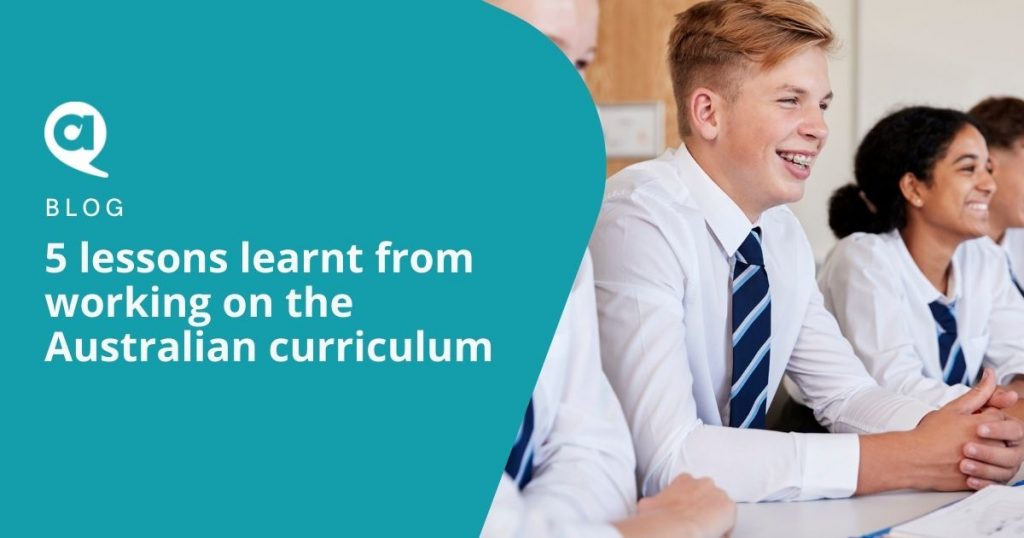
1 March 2022
By Janice Atkin
ACHPER NSW
Professional Learning Officer
Janice Atkin was the Curriculum Lead for Health and Physical Education on the recent Australian Curriculum review. She reflects on what she learnt during the process.
Lesson #1
Teachers are no longer the gatekeepers of knowledge.
The world wide web has put all manner of information at ours (and our students) fingertips. Previously, a teacher’s role was to impart new knowledge to students. More often than not all the information students need to know about PDHPE topics is available online.
Implications for your work: We need to design PDHPE programs that focus on teaching students the skills they need to be critical consumers of knowledge.
Lesson #2
Students are no longer passive participants.
Think about the way students consume media and socialise with their friends. Most of this engagement is fuelled by creation of new content – they are either creating content to share with their networks via social media or they are consuming content that has been created by people in their networks. Very little of what students do these days outside of school involves passive participation modes. They choose what they consume and how they consume it.
Implications for your work: Create learning activities where students are actively engaged in creating new knowledge or meaning and provide authentic opportunities for them to share this new knowledge within their networks at school, whether that is their class, year group or the broader school community.
Lesson #3
Students need to feel connected to their world. To truly engage young people you need to see the world through their eyes.
If we want students to truly engage with the learning we deliver in PDHPE, we must deliver it through contexts that are relevant and meaningful to our local community. The syllabus provides us with the flexibility to design programs that meet the needs and interests of our student cohort through selecting the most relevant contexts of learning.
We know that when students are making decisions about whether to try alcohol or drugs they are rarely making these decisions without influence from their peers, or based on their own sense of wellbeing or to take a risk and try something new.
Delivering siloed units that focus on topics in isolation such as smoking, drugs, road safety or nutrition without making explicit links to other topics or contexts, presents the decisions students may be faced with in a vacuum and may not recognise the range of influences that sit behind their choices and behaviours.
Implications for your work: Create learning activities that reflect the way young people experience the world.
Design opportunities where students can explore realistic scenarios that explore the multitude of factors that may influence the way they behave, decisions they make and potential consequences they may potentially experience, remembering that there isn’t just “one right way to be healthy”.
To ensure your programs are relevant, involve young people in key aspects of program development. Student voice is one of the most important factors in ensuring a meaningful and authentic PDHPE program.
Lesson #4
The classroom no longer has four walls.
If our experiences during the last two years have taught us anything it is that the classroom no longer has physical barriers. COVID closures forced us to think outside of the box to deliver PDHPE virtually, and the skills we learnt we can utilise to expand the learning experiences we provide for our students.
Implications for your work: Our newfound tech capabilities and resources allow us to open up our classrooms to a vast array of experts who can share their knowledge and expertise with our students.
We can also exploit the technology that was inspired by COVID necessity to create opportunities for authentic collaboration between students and outside experts, or even fellow students in other locations. COVID also taught us the importance of being able to escape the four walls and connect with the outside world. So many of us, including our students found solice in the 1 hour of exercise where we could escape from our house and go to the park to exercise.
Look for opportunities in your PDHPE program where you can take your students out into the natural environment and reconnect with nature, it could be as simple as doing a meditation and focusing on the sounds of nature, walking barefoot on grass, or exploring the local area to discover bushwalks all of these will improve wellbeing and broaden the physical activity experiences of our students.
Lesson #5
Young people want to do something to make a difference now.
Despite what the media may have us believe, young people are actively engaging in social issues and movements to change their world.
Think here about the #TeachUsConsent campaign, School Strike for Climate Change and #BlackLivesMatter. Young people want to feel a sense of control over what is happening in their worlds. If we are teaching about advocacy in the health or movement space and we ask students to design a campaign or other form of advocacy – make it meaningful and authentic.
Implications for your work: When designing learning experiences give students real world problems to solve and an authentic real audience to hear their solutions. If students believe the solutions they design will be valued and potentially implemented it will make the learning feel essential and it will provide a sense of control that is so important when it comes to a young person’s mental wellbeing.


